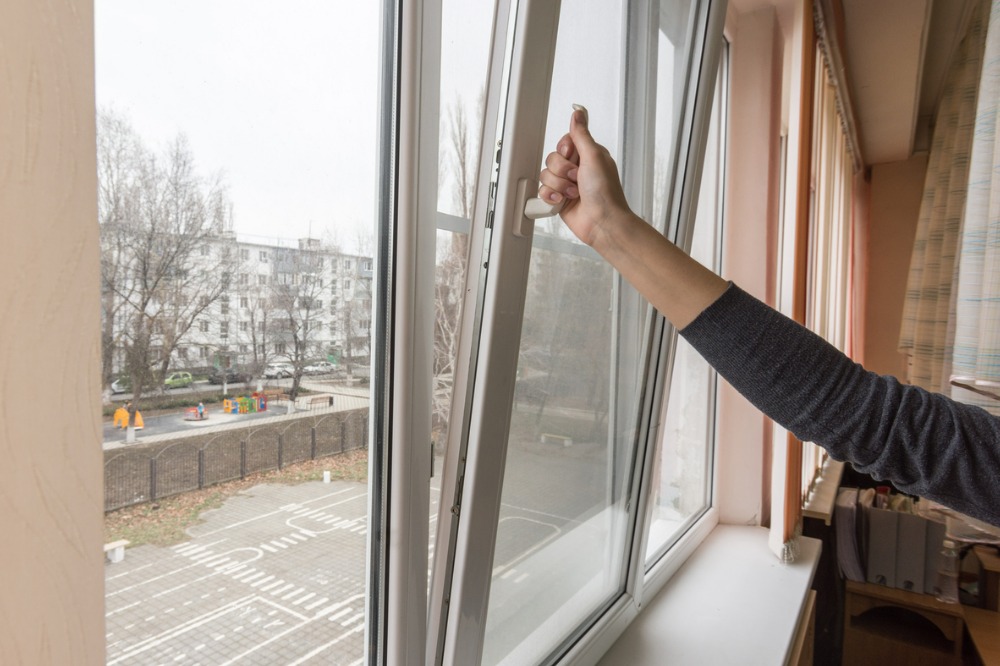
As scores of schools across the country are forced to shut down due to the spread of the highly contagious Delta strain of COVID-19, two experts said that simply opening windows and doors in classrooms may be enough to curb infection.
In an article published in The Conversation, Bruce Milthorpe, emeritus professor at the Faculty of Science, and Geoff Hanmer, honorary professional fellow, both from the University of Technology Sydney (UTS) expressed concern that “poorly ventilated schools are a super-spreader event waiting to happen” but noted that there are several practical measures schools can take to prevent the spread of the virus.
“Most schools are naturally ventilated,” the experts wrote. “This means windows must be open to deliver fresh air, which will dilute and disperse airborne pathogens. It is not a coincidence the current Australian outbreaks are happening in winter, when naturally ventilated buildings, including most schools, are more likely to have their windows shut to keep the heat in.”
The experts added that some buildings that are “mechanically ventilated” or those with air conditioning, particularly split types, do not provide proper ventilation as these units “typically recirculates air inside a space” instead of introducing fresh air into the building.
“Mechanically ventilated buildings are supposed to have around 10 litres per second (l/s) of fresh air per person,” they wrote. “But the temptation to throttle back fresh air to save energy and money is ever present. And even with 10 l/s per person coming in, there may be places with poor ventilation. This includes stairwells, lifts, corridors, and assembly spaces.”
“As aerosols may persist in the air for hours, schools with poor ventilation become a high risk for transmission and kids can take it back to their families,” the authors added.
The experts also noted that a building’s appearance “is not a reliable guide” on how well ventilated it is.
“Our informal measurements show many newer mechanically ventilated buildings are not well ventilated,” they wrote. “Perhaps counter-intuitively, older style naturally ventilated school buildings with leaky wooden windows on both sides of the room and high ceilings often appear to perform well.”
How can schools keep classrooms well-ventilated?
The experts listed several ways for schools to keep their premises properly ventilated.
First, they suggested that schools must have access to a carbon dioxide (CO2) meter and “take necessary action” when the CO2 level, which is an indicator of ventilation, exceeds 800ppm. The best practice is to keep the level at around 600ppm, according to the authors, adding NDIR sensor-type CO2 meters are priced between from $100 and $500.
Another approach is keeping windows and doors open. “This may require kids and teachers putting on an extra layer of clothing, turning up the heating, providing supplementary heaters and making revised security arrangements,” the experts wrote.
For mechanically ventilated spaces, the authors advised hiring a professional to work on improving the ventilation systems. In the meantime, school staff can open doors and windows, use electric fans to “mix air in large volume spaces,” or move activities outdoors.
“Where improvements in ventilation are not immediately possible, portable air purifiers can reduce the amount of virus in the air,” the experts wrote, adding that air purifiers need to have a HEPA (high-efficiency particulate absorbing) filter to be effective and must match the size of the room.
“In the future, we will need to change building regulations to deliver safe, clean air in schools,” the authors added. “For now, we just need to do the best we can. It may be as simple as opening the windows.”


